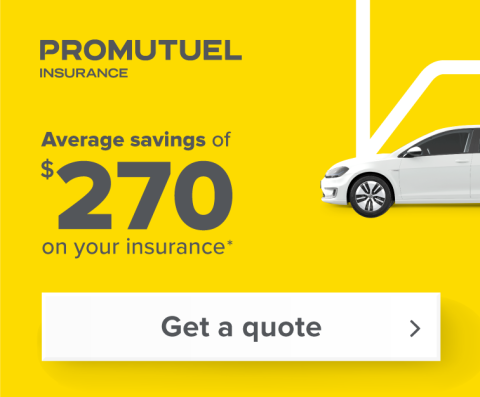Replacement cost coverage and replacement insurance: Understanding the difference

Planning on buying or leasing a new car? You probably already know that the vehicle you’re dreaming of—and are ready to spend handsomely on—will lose a big chunk of its value within the first few years. And if you didn’t, then you’d be well advised to take steps to avoid an unpleasant surprise in the event of an accident and car insurance claim.
You can protect yourself against this rapid decline in value known as “depreciation” by purchasing replacement cost coverage or replacement insurance. What’s the difference, and which one is right for you? Who sells these products and can advise you on the best choice for your needs? We’re here to answer these questions and more!

Protection against depreciation: principles and products
Imagine that you pay $40,000 for your new car. Three years later, you’re in an accident and your vehicle is declared a total loss—i.e., it would cost more to repair than replace. You then discover that your claim will be settled for the value of your car on the day the loss occurred—$20,000.
Sounds crazy? Afraid not. Depending on the make and model, a new car can lose up to half its value within the first three years. Remember: the basic rule in damage insurance is to compensate the insured for the value of their property on the day the loss occurred. However, you can obtain replacement value for your vehicle in the event of a claim by choosing one of the following two coverage options:
- A replacement cost endorsement in addition to your basic car insurance. This optional coverage is also known as QEF No. 43 or Endorsement 43 – Change to indemnity.
- Replacement insurance, also known as QPF No. 5. This is a separate policy that supplements your basic car insurance, and may even be with a different insurer.
The idea behind these two coverage options is the same: to protect you against the steep drop in your vehicle’s value for the first few years after purchase. But even though they share the same purpose, each product has different features you’ll need to understand in order to choose the one best suited to your needs. Let’s take a closer look.
Replacement cost coverage versus replacement insurance
Let’s clarify one thing right away. Only certified damage insurance representatives have the right to explain these two products and advise you on which is best for your needs. These insurance professionals are trained to provide advice and are supervised by Chambre de l’assurance de dommages (ChAD), an organization tasked with protecting the public.
ChAD has created a comparison chart on the optional QEF No. 43 and QPF No. 5 coverages for new vehicles, which we’ve summarized here to highlight the differences between the two.
Replacement cost endorsement
What is replacement cost coverage? Here are the main characteristics of QEF No. 43:
- Only damage insurance representatives (agents and brokers) can promote and sell this product.
- It’s an endorsement that’s added to your QPF 1 car insurance policy, which means you have just one contract—and just one insurer to deal with if you make a claim.
- If your vehicle is stolen or declared a total loss, you have the choice between replacing your vehicle or receiving an indemnity, without depreciation at the time of the loss being taken into account. If your vehicle isn’t a total loss, it will be repaired, and the damage assessed on the basis of the cost of new original parts (without depreciation).
- You can replace your vehicle with a current year model that has the same features or with a different new or used model. In both cases, you choose the dealer. You can even replace your vehicle with a more expensive model if you want, so long as you’re willing to pay the difference.
- Coverage is offered on an annual basis, usually for a maximum of 4 to 5 years. You can renew or drop it at your discretion. You can also cancel the coverage at any time and get a pro rata refund on your premium.
- The cost of replacement cost coverage is generally a percentage of your car insurance premium. Various factors are taken into account to determine the premium, including your driving record, vehicle type and model, and the way each insurer prices risk for the vehicle in question. The premium is relatively inexpensive the first year, but gradually increases over time as the vehicle’s value depreciates.
For more information, including the deductible you’ll pay in the event of a claim, contact your insurance representative.
Replacement insurance
What about replacement insurance? Here are the key things you need to know about QPF No. 5:
- In addition to damage insurance representatives (agents and brokers), car dealerships can also sell this product.
- Since June 13, 2019, dealerships have been required to provide customers with a summary of the product, the termination notice, a sample policy, and an information sheet.
- If you purchased replacement insurance from a car dealership when you bought or leased your car, you have 10 days to cancel the policy at no charge.
- You will have two separate insurance contracts, and maybe even two insurers for your car.
- In the event of a loss, you’ll have to file two claims: first you’ll be compensated for the depreciated value under your basic auto insurance policy (QEF No. 1); then the insurer on your QPF No. 5 will make up the difference between the depreciated value and the replacement cost.
- If your vehicle is stolen or written off, replacement is compulsory. The insurer will pay the indemnity directly to the car dealership of your choice.
- Terms of one to eight years are available for this type of insurance. You can cancel prior to the termination date, but cancellation fees apply.
- Premiums are fixed and are based on the duration of the policy and the value of the vehicle.
As mentioned earlier, car dealer employees are not authorized to explain the difference between replacement cost coverage and replacement insurance. For advice on the best choice for your needs, contact an insurance representative.
Which option should you choose?
Additional coverage to protect your new vehicle against depreciation makes good sense in some situations. Opt for replacement cost coverage if:
- You buy or lease with a down payment
- You change cars frequently
- You rack up a lot of mileage
- You buy a vehicle with a high depreciation rate
The best course of action is get answers to all your questions from a damage insurance representative. Feel free to talk to a Promutuel Insurance agent for advice and the best in coverage options so you can enjoy your new vehicle worry free!




